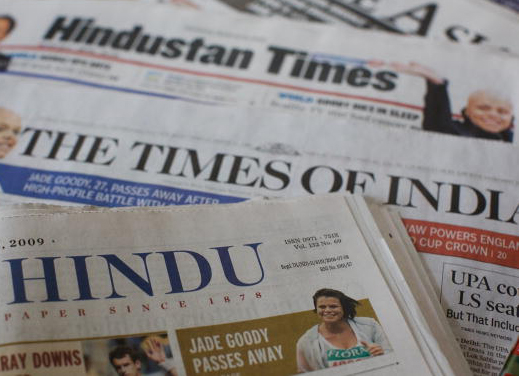
Starved of gold, India may import record volumes of silver this year
Silver imports are on pace to hit a record high this year as the wedding and festival season drives up buying of the precious metal instead of the traditional gold, made scarcer and dearer by official measures aimed at cutting the trade gap. Higher silver demand in the world's biggest buyer may help support prices, which have fallen almost 30 per cent this year on the international market and are on track for their biggest annual drop in almost three decades. The increase in buying is unlikely to spark a fresh policy response from authorities, as in the case of gold, since the value of silver that is imported is far lower than that of gold and therefore not critical to the trade balance. The import duty on silver was also raised to 10 per cent in August from 6 per cent, but prices remain far apart: gold is about 60 times more expensive than silver in dollar terms. Gold has a special place in Indian culture, bought as a hedge against inflation and traditionally used for gifts at weddings and festivals. Silver does not enjoy the same status. The value of silver imports in 2012 was $1.8 billion, whereas gold imports cost $52 billion. Even record shipments of silver are therefore unlikely to put any strain on the trade deficit, in contrast to the impact of gold, which is India's second-biggest import item after oil.
(Source: Economic Times)
India's trade, infrastructure growth prospects most promising: HSBC
Despite subdued economic growth, India has elicited a vote of trust from businesses worldwide, in a HSBC survey. The HSBC Trade Confidence Index puts India at the highest spot, 142 points, followed by UAE (132 points) and Indonesia (127 points). Armed with growing demand because of its population, India offers a huge market for consumption goods, the report said. "Despite its recent slowdown, the economic promise of India remains substantial, with the growing population and nascent domestic middle class generating a burgeoning market for consumption goods." This, it said, signals that businesses are generally confident about trade prospects in the country. The report might give some respite to the government, trying hard to sell our growth prospects to investors. Finance minister P Chidambaram leaves on Wednesday for Washington and San Francisco to woo investors there. On long-term prospects, HSBC said Asia was expected to see the fastest growth in merchandise exports till 2030, with China, India and Vietnam averaging over 10 per cent annual growth. The report also said India was set to overtake America as the biggest importer of inputs for infrastructure by 2020, as it builds new transport networks and power plants, among other amenities. India has pegged infrastructure spending at $1 trillion in the 12th five year plan (2012-13 to 2016-17) from a little less than $500 billion in the previous five years. It further said that India will become the third-largest exporter of intermediate goods by 2030, after China and the UAE. At present, India is 11th.
(Source: Business Standard)
Tourism industry welcomes easing of visa norms
The tourism industry has welcomed the government’s decision to make India a more tourist friendly destination by easing visa norms. The industry is expecting a spurt of 25 per cent in the total foreign tourist arrivals (FTA) in the short term, if the process is implemented efficiently. In the next three to five years, visa on arrival and the e-visa facility are going to set the tourism sector towards doubling the FTA number to 12-13 million. The government has started the process of providing visa on arrival to 40 countries including the US, Germany, France and the UK. The four countries - the traditional source markets for India alone account for more than 40 per cent of the foreign tourists visiting India. The tourism industry has been lobbying for improving the visa facilities - which can play quite a dampener for tourists planning a vacation. Currently, India extends this service to 11 countries including Singapore, Thailand, Luxembourg, Indonesia and Laos among others. For the period January to August 2013, the number of tourists availing visa on arrival has gone up by 29.4 per cent. Industry also feels that the next step should be to reduce the visa fees to $20 and also work towards improving the air connectivity and opening up Indian skies so that more tourists can make use of the visa on arrival.
(Source: Business Standard)
Power play in South Asia to energise India’s hold among Saarc countries
After finding favour with energy resource-rich countries such as Nepal and Bhutan, India's proposal for a common power market in South Asia is now gaining traction with power-deficit countries of the region like Bangladesh, Sri Lanka and Pakistan. While Indian power companies have a strong footprint in the hydropower sectors of Bhutan and Nepal, estimated to have generation potential of 30,000 mw 40,000 mw respectively, they have now found toeholds in Sri Lanka and Bangladesh. Pakistan, too, has solicited Indian investment in its power sector. A power grid linking South Asian Association for Regional Cooperation (Saarc) countries including India, Bangladesh, Nepal, Pakistan and Sri Lanka has the potential to create 1,00,000 MW capacity in the region and help bridge the energy deficit faced by South Asian nations. However, long-standing political tension between India and Pakistan over Kashmir, war-like conditions in Afghanistan, internal armed conflicts in Sri Lanka and Nepal and the political turmoil in Bangladesh are examples of how political factors inhibit the development of regional cooperation and trade.
(Source: Financial Express)
Economic Section
Royal Thai Embassy















